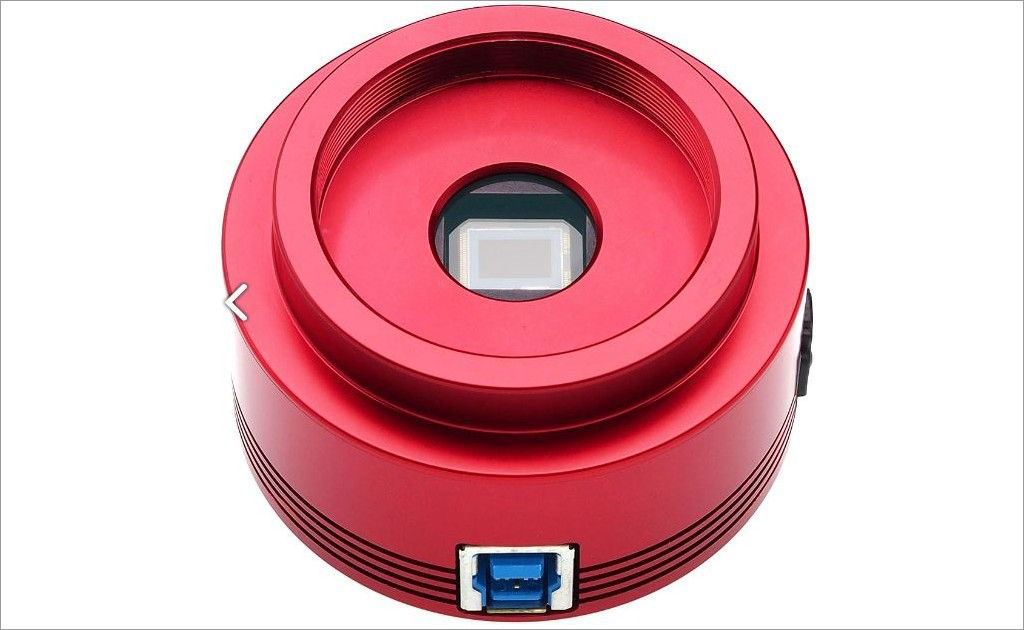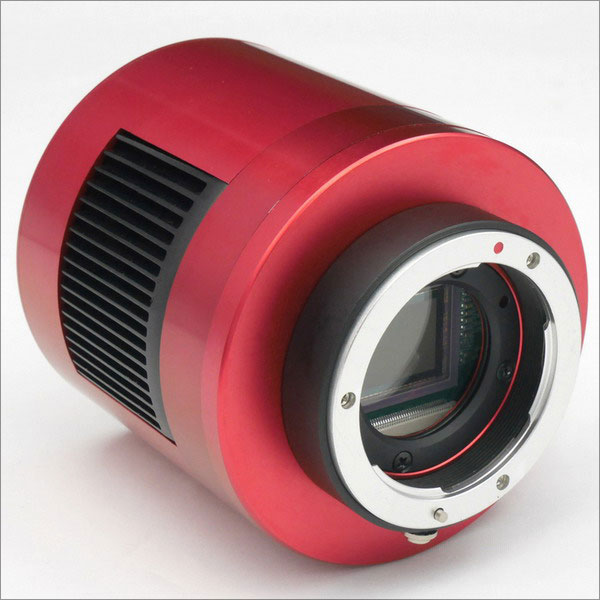Sam Wen of ZW Optical - Vendor Profile
July 11, 2016Discuss this article in the forumsSam Wen of ZW Optical generously took some time to answer questions from Astronomy Connect about the wide range of ZWO cameras now available to experienced and beginning imagers. Sam told us why ZWO cameras are different, why ZWO chose CMOS sensors over CCD, and which cameras are best for lunar/solar, planetary, deep-sky, and for beginners who want to do a bit of everything. Fig. 1 - Sam Wen of ZW Optical.1. How are ZWO cameras different from other astronomy cameras?
Fig. 1 - Sam Wen of ZW Optical.1. How are ZWO cameras different from other astronomy cameras?We at ZWO are amateur astronomers ourselves, so we know what our customers want in our products. We focus on hardware and our cross-platform SDK (software development kit). We cooperate with many other astronomy software companies to make sure our cameras are compatible with industry standards.
Our cameras are also quite user friendly. Most users don’t need instructions or a manual to operate our cameras. Our beginner cameras even come with an all-sky lens so you can start imaging right away as soon as you install the driver.
2. Why did you choose to use CMOS sensors instead of CCD?The trend is moving to CMOS, and we believe that CMOS will eventually replace CCD for most applications. CMOS sensors have higher QE (quantum efficiency), faster read times, and they are less expensive than CCD. They are also getting less noisy, which is very important for astrophotography. CMOS is taking over for planetary imaging, and it will be not too long before it takes a leading role in deep-sky imaging as well.
3. What are the most important sensor specifications for astrophotography?The size of the sensor and the size of the pixels are important. They define the field of view and the resolution of the images. The quantum efficiency, which describes how efficiently light gets turned into electrical signals, is also important. So is the read noise, a specification which limits the camera signal-to-noise ratio (S/N). Signal-to-noise is everything!
4. What effect can the sensor shutter technology have when imaging solar system objects?Shutter technology is not a problem for planetary imaging if the camera can run up to 30fps. For slower speeds, the effect of the shutter depends on the speed of target. It’s usually no problem for slow moving objects, but image distortion can happen if the target moves very fast because the sensor captures the exposure line by line. For example, it will take 1s to exposure from top to bottom if the capture rate is 1 fps, and the target may change or move during such a long period.
 Fig. 2 - The ZWO ASI224MC astronomy camera.5. You are now offering cooled versions of some of your cameras. Cooling can be essential for deep-sky imaging. But how important is cooling for solar system imaging?
Fig. 2 - The ZWO ASI224MC astronomy camera.5. You are now offering cooled versions of some of your cameras. Cooling can be essential for deep-sky imaging. But how important is cooling for solar system imaging?Cooling reduces noise from dark current, and that’s only a problem when doing longer exposures. It’s not important for exposures shorter than 500 ms. But if you are going for deep-sky objects, which typically require longer exposures, cooling is a big advantage.
6. Is cooling regulated in the ZWO cameras, or is it “all or nothing” cooling?The cooled ZWO cameras include regulated TEC cooling. Regulated cooling is a big advantage because you can set the target temperature of the camera and take dark frames. If the temperature is regulated, the dark frame matches the light frame during imaging, and you can calibrate your image. If the temperature is changing while you take your calibration frames and during your image capture, you cannot calibrate very well.
7. Your product line has expanded quickly in the last year. Can you help new imagers understand how to choose a ZWO camera? For example, what are the best ZWO cameras for mostly planetary imaging? The best ZWO cameras for lunar/solar imaging, as well as planetary? The best ZWO cameras for general-purpose imaging, including deep-sky?Right now, the ASI224MC is the best color planetary imaging camera. It has a similar sensor size to the ASI120MC-S, but the sensor allows much faster download rates, which is very important in capturing planetary images. The ASI290MC is also very close in performance for planets and it has faster frame rate and higher resolution. The ASI290MM is the best mono planetary imaging camera.
For lunar and solar imaging, you can consider higher resolution cameras like the ASI178 and ASI174.
Our best camera for deep-sky imaging is the ASI1600 (color or monochrome), especially the cooled versions.
8. What’s the best general-purpose ZWO cameras for someone new to imaging?The ASI120 series of cameras is ideal for new imagers. It can do planetary, lunar/solar, and some deep-sky imaging at a good entry-level price. For beginners with slightly deeper pockets, they can go right into the ASI290MC with the faster download rate. It’s just as easy to use as the ASI120 cameras.
 Fig. 3 - A ZWO ASI1600MM-COOL cooled astronomy camera.9. Your cameras also have many accessories, including adapters to attach Canon DSLR camera lenses for wide-field imaging. How are the ZWO cameras better than DSLRs for wide-field imaging?
Fig. 3 - A ZWO ASI1600MM-COOL cooled astronomy camera.9. Your cameras also have many accessories, including adapters to attach Canon DSLR camera lenses for wide-field imaging. How are the ZWO cameras better than DSLRs for wide-field imaging?In the case of the ASI1600 camera, for example, it can provide faster frame transfer rates and the cooled version reduces dark noise compared to a DSLR.
10. What’s the best capture software to use with ZWO cameras?For planetary imaging, SharpCap and Firecapture. For DSO imaging, MaxIM-DL, SPG, and lots of other apps that support ASCOM.
11.Your new ASI1600-series is your first camera optimized for deep-sky imaging. It has a large 4/3" sensor, but what other features of this camera are designed for DSOs?The most important features of the ASI1600 are the super low read noise and the regulated cooling (in the cooled versions).
12. What is coming next in the ZWO camera product line?We will develop and launch some larger format sensors in some of our future products.
***
This article is © AstronomyConnect 2016. All rights reserved. Images © Sam Wen and ZW Optical 2016. All rights reserved.
-
Final Announcement: We're Saying Goodbye to AstronomyConnect. Read Our Closing Notice.
Dismiss Notice
New Cookie Policy
On May 24, 2018, we published revised versions of our Terms and Rules and Cookie Policy. Your use of AstronomyConnect.com’s services is subject to these revised terms.

